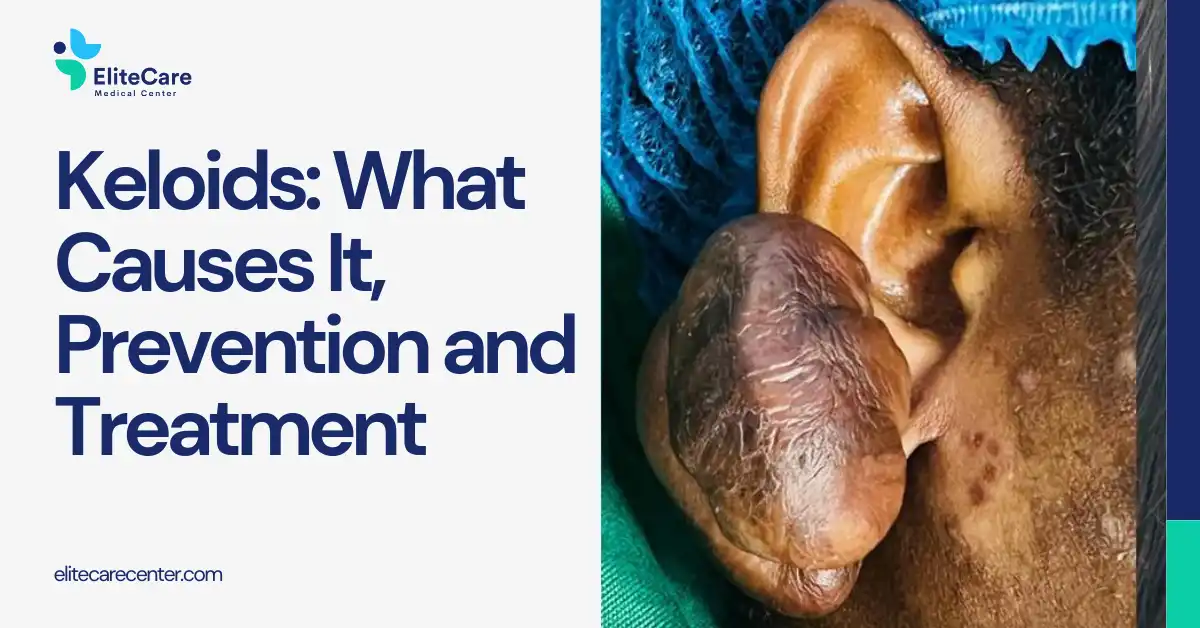Keloids are more than just scars — they are raised, often itchy or painful areas of fibrous tissue that grow excessively at the site of skin injury. Unlike normal scars, keloids extend beyond the boundaries of the original wound and do not regress over time. For many people, especially those with darker skin tones, keloids can cause significant cosmetic concerns and even emotional distress.
What Causes Keloids?
Keloids form as a result of an overactive healing response in the skin. When the skin is injured — whether by surgery, acne, piercings, burns, or even insect bites — the body produces collagen to repair the damage. In some individuals, collagen production goes into overdrive, forming thick, raised scars.
Risk factors include:
- Genetic predisposition (family history of keloids)
- Darker skin tones (more common in African, Asian, and Hispanic populations)
- Age (most commonly between 10–30 years)
- Areas of high skin tension like the chest, shoulders, back, and earlobes
How Do Keloids Appear?
Keloids may:
- Appear weeks or months after an injury
- Be pink, red, or dark brown
- Be smooth, shiny, and rubbery
- Cause itching, burning, or tenderness
- Continue to grow over time
Can Keloids Be Prevented?
While you can’t completely prevent keloids if you are prone to them, you can take steps to reduce your risk:
- Avoid unnecessary skin trauma (e.g., tattoos, piercings)
- Treat acne early to prevent scarring
- Inform your doctor or surgeon if you have a history of keloids before undergoing any procedure
- Use pressure earrings or silicone sheets after ear piercings or surgeries
Treatment Options for Keloids
Managing keloids can be challenging, and treatments often need to be tailored to the individual. At EliteCare, we offer several options that can reduce the size, symptoms, and appearance of keloids:
- Corticosteroid injections: Help flatten the scar and reduce itching or pain
- Silicone gel sheets or creams: Help soften and flatten keloids over time
- Cryotherapy: Freezes the keloid to reduce size (best for smaller keloids)
- Laser therapy: Improves texture and pigmentation, often used in combination with other treatments
- Surgical excision: Carefully removing the keloid, usually followed by adjuvant therapy to prevent recurrence
- Combination therapy: Often the most effective approach, combining injections, laser, and topical agents
Final Thoughts
Keloids can be stubborn and frustrating, but with the right care, they can be managed effectively. If you’re struggling with keloids or have concerns about a scar that’s growing or causing discomfort, it’s important to seek professional advice.
At EliteCare, our dermatology and aesthetics experts are here to help you find the safest and most effective treatment for your skin.













